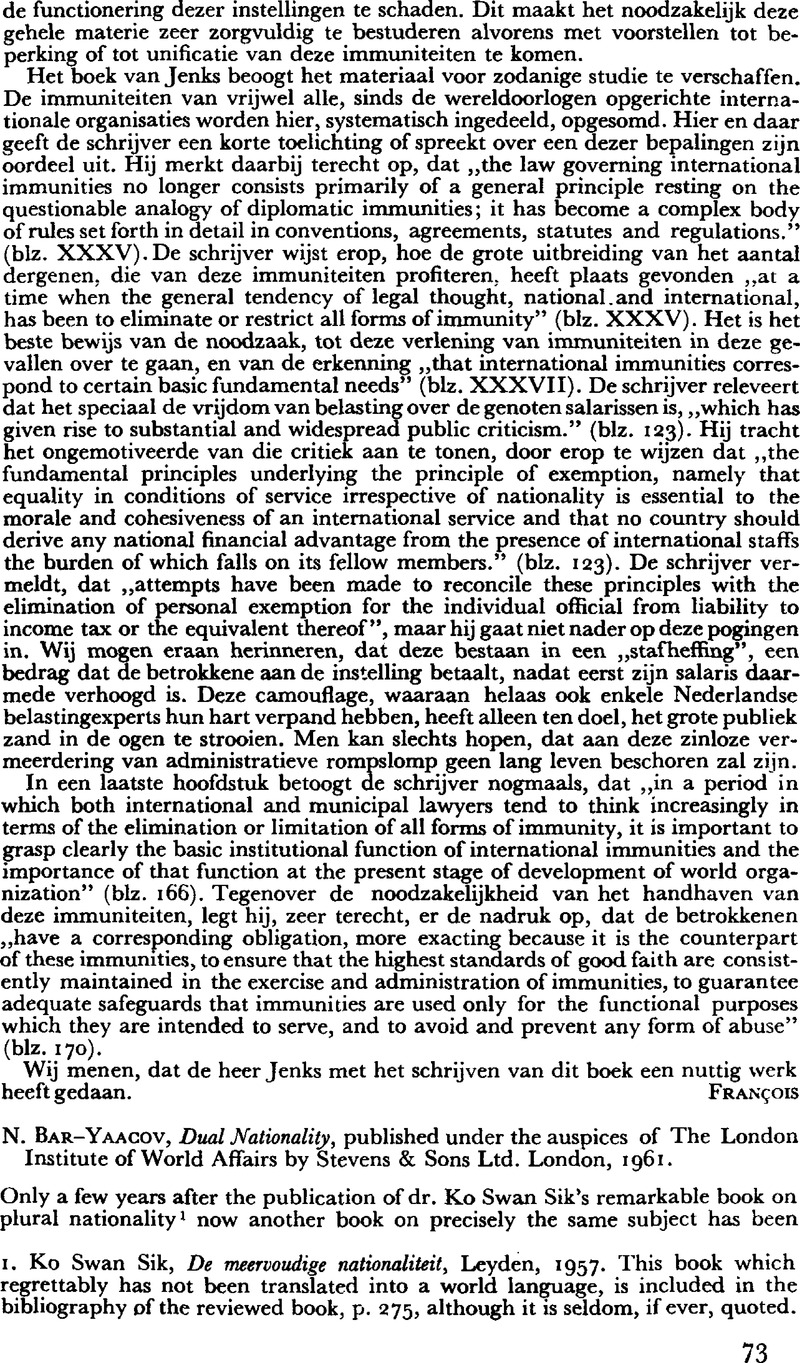No CrossRef data available.
Article contents
N. Bar-Yaacov, Dual Nationality, published under the auspices of The London Institute of World Affairs by Stevens & Sons Ltd.London, 1961.
Published online by Cambridge University Press: 21 May 2009
Abstract

- Type
- Boekbesprekingen — Bookreviews
- Information
- Copyright
- Copyright © T.M.C. Asser Press 1963
References
1. Sik, Ko Swan, De meervoudige nationaliteit, Leyden, 1957.Google Scholar This book which regrettably has not been translated into a world language, is included in the bibliography of the reviewed book, p. 275, although it is seldom, if ever, quoted.
2. Cf Reports of the ICJ 1955, p. 17–24 passim.
3. From what the author says on p. 238 it may be concluded that the assumption made in the text is also shared by him. It should be borne in mind that only a few States are parties to the Convention of 1930.
4. Legislative provisions to this effect would be no novelty. Cf e. g. Article 1 (1) of the Act of February 10, 1910 relative to the Netherlands nationality of persons who are not Netherlanders (as amended). See for its text U.N. Legislative Series, Laws Concerning Nationality (St/Leg/SER. 8/4), p. 326.
5. The Permanent Court of International Justice hints at the possibility of a dual domicile in its judgment of May 25, 1926 on German Interests in Polish Upper Silesia, Series A 7, p. 79.Google ScholarCf. also Arbitrator Kaeckenbeeck in Actes et Documents de la Conférence germano-polonaise tenue à Vienne du 30 avril au 30 août 1924, p. 369. et seq.


